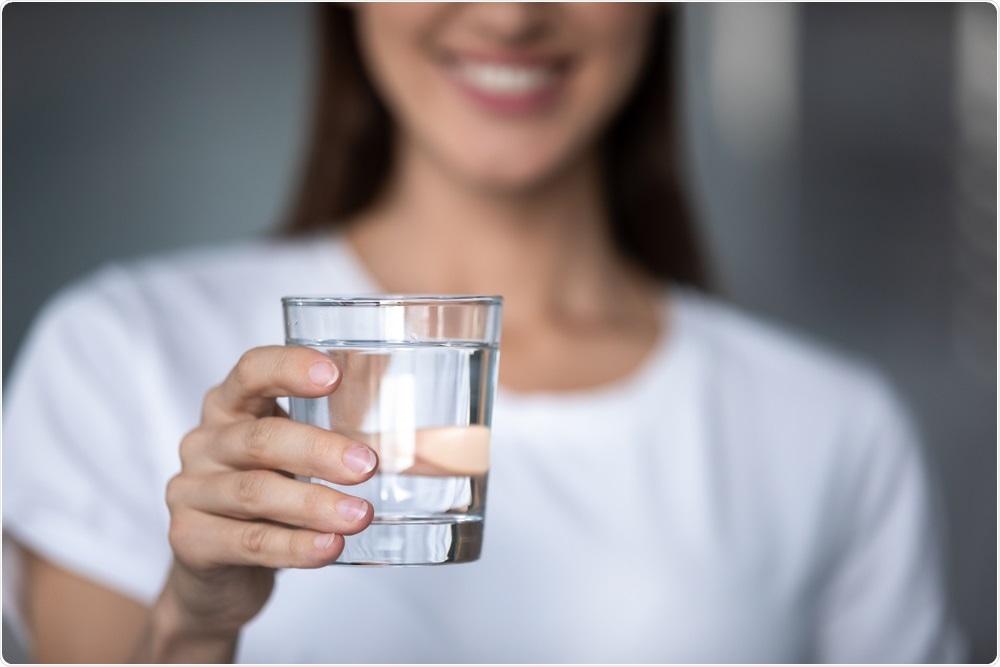Researchers at John Hopkins University have found that the most common method for disinfecting water – chlorination – can generate toxic by-products that have not previously been identified.

Image Credit: Fizkes/Shutterstock.com
The team says the by-products produced when naturally occurring compounds called phenols react with chlorine, may be missed by the methods currently used to test the safety of drinking water.
Adding chlorine is the most commonly used method for ridding drinking water of potentially dangerous microbes and since it was introduced at the start of last century, it has protected millions of people from water-borne diseases.
The process “comes with unintended consequences”
"There's no doubt that chlorine is beneficial; chlorination has saved millions of lives worldwide from diseases such as typhoid and cholera since its arrival in the early 20th century," says lead author Carsten Prasse.
"But that process of killing potentially fatal bacteria and viruses comes with unintended consequences. The discovery of these previously unknown, highly toxic byproducts, raises the question how much chlorination is really necessary."
Scientists are already aware of potentially harmful by-products that may be produced when phenols present in drinking water mix with chlorine, but according to the World Health Organization “the risks to health from these by-products are extremely small in comparison with the risks associated with inadequate disinfection.”
However, Prasse says the methods currently used to analyze drinking water cannot detect all of the by-products and that some of them could be hazardous to health.
The researchers used another technique
For the current study, Prasse and colleagues used an amino acid commonly employed in toxicological analyses to detect harmful compounds called reactive electrophiles. These compounds have previously been associated with a number of different diseases.
The researchers added this amino acid – N-α-acetyl-lysine – to water that had been chlorinated using the same commercial methods for treating drinking water. After leaving the water to incubate for one day, the team used an analytical method called mass spectrometry to test for any electrophiles that reacted with N-α-acetyl-lysine.
As recently reported in the journal Environmental Science & Technology, the analysis revealed the presence of two toxic, carcinogenic compounds: 2-butene-1,4-dial and chloro-2-butene-1,4-dial. Prasse says these compounds have never been identified in chlorinated drinking water before.
Although the authors acknowledge that this was a laboratory-based study and these toxic compounds have not yet been tested for in real drinking water, they say the results show that the by-products can be formed under the conditions that applied in their experiment.
The findings raise questions about the safety of drinking water and disinfection techniques
The findings now raise questions about whether these newly identified by-products are present at levels high enough to pose a risk to human health and whether other disinfection methods such as treatment with UV light or filtration should be used.
"In other countries, especially in Europe, chlorination is not used as frequently, and the water is still safe from waterborne illnesses. In my opinion, we need to evaluate when chlorination is really necessary for the protection of human health and when alternative approaches might be better," says Prasse.
Prasse adds that new techniques are clearly needed that will enable the evaluation of harmful by-products that may be formed when chlorine or other chemicals are used for disinfection purposes:
“One reason regulators and utilities are not monitoring these compounds is that they don't have the tools to find them," he concludes.
Sources:
EurekAlert!. (2020). What's in your water?. [online] Available at: https://www.eurekalert.org/pub_releases/2020-01/jhu-wiy012820.php [Accessed 29 Jan. 2020].
New Atlas. (2020). New toxic byproducts found in chlorinated water. [online] Available at: https://newatlas.com/science/toxic-byproducts-chlorinated-water/ [Accessed 29 Jan. 2020].